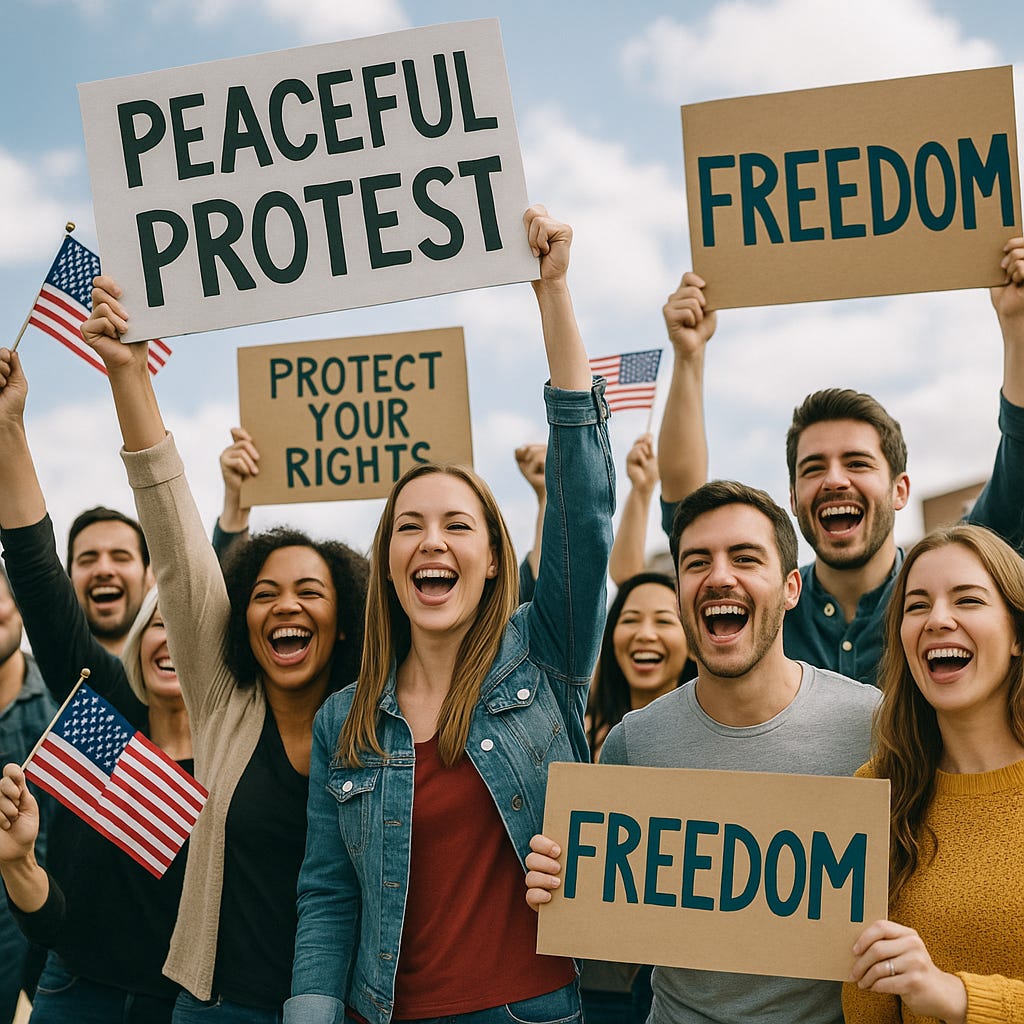The First Amendment protects your right to protest—as long as it’s peaceful. Here’s what to know:
✅ What You Can Do
Gather peacefully in public places like sidewalks, parks, or streets.
Speak out, hold signs, and chant, even if your message is unpopular.
Record public events and police from a safe distance.
🚫 What You Can’t Do
Use or threaten violence. It’s not protected.
Block traffic or entrances without a permit.
Enter private property without permission.
Bring weapons. They can escalate tensions or break local laws.
🛑 If Police Approach You
Stay calm. Ask: “Am I free to leave?”
If detained, say: “I want a lawyer. I choose to stay silent.”
Don’t resist—even if you think the arrest is unfair.
⚠️ If Someone Tries to Disrupt Your Protest
Don’t engage with hecklers or agitators.
Stay peaceful and walk away if needed.
Tell the organizers or police about threats.
Record safely but only if it’s safe to do so.
📋 Permits
Small groups usually don’t need permits.
Big events or marches in the streets may require one, but the rules must apply fairly to everyone.
Peace is your power. Stay focused. Stay strong.
More Resources
ACLU: Protest Rights and Safety Center
Human Rights Campaign: Tips for Preparedness, Peaceful Protesting, and Safety
WIRED: How to Protest Safely: What to Bring, What to Do, and What to Avoid
Related commentary in Plainly, Garbl: Defending Our Right to Protest, March, Demonstrate
Also at Plainly, Garbl
Advocacy Resources
Where passion meets purpose — and information becomes action.
Find your lawmakers, track legislation, make your voice count.
Step-by-step guides, toolkits, and platforms for effective organizing.



Take video with your phone, but be sure not to interfere with police and remain on public property.